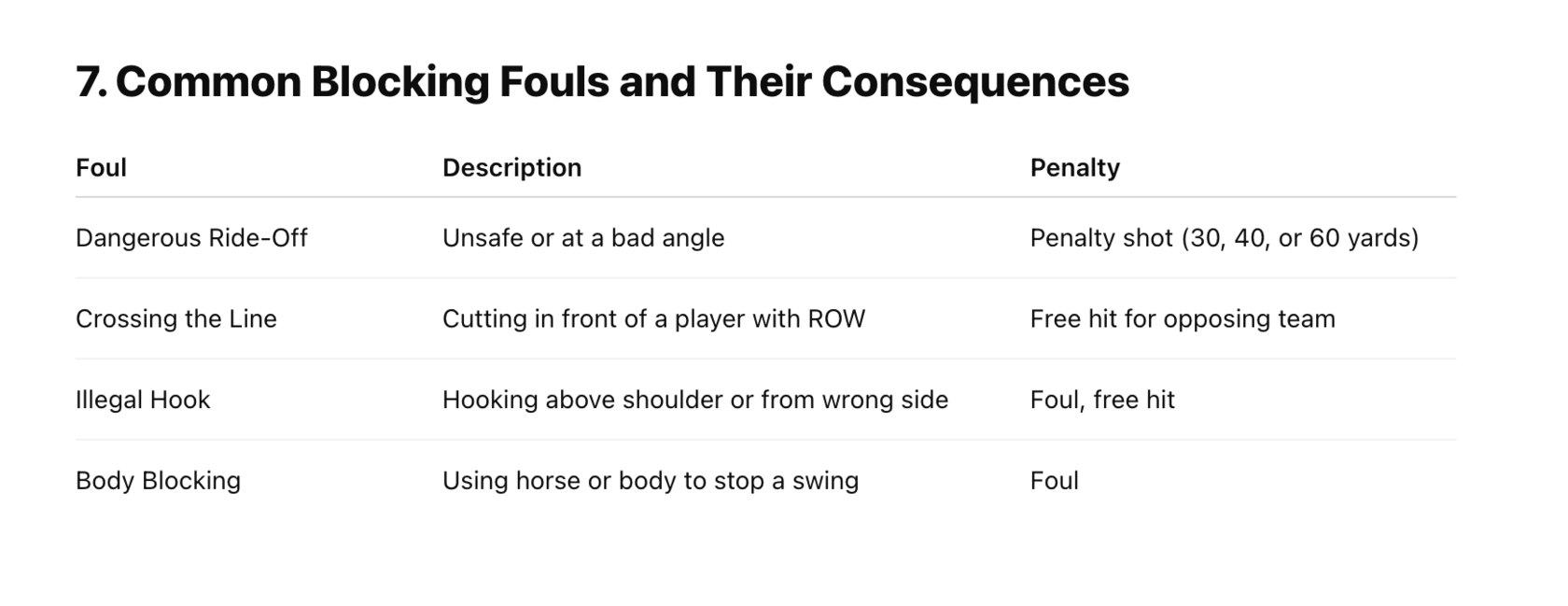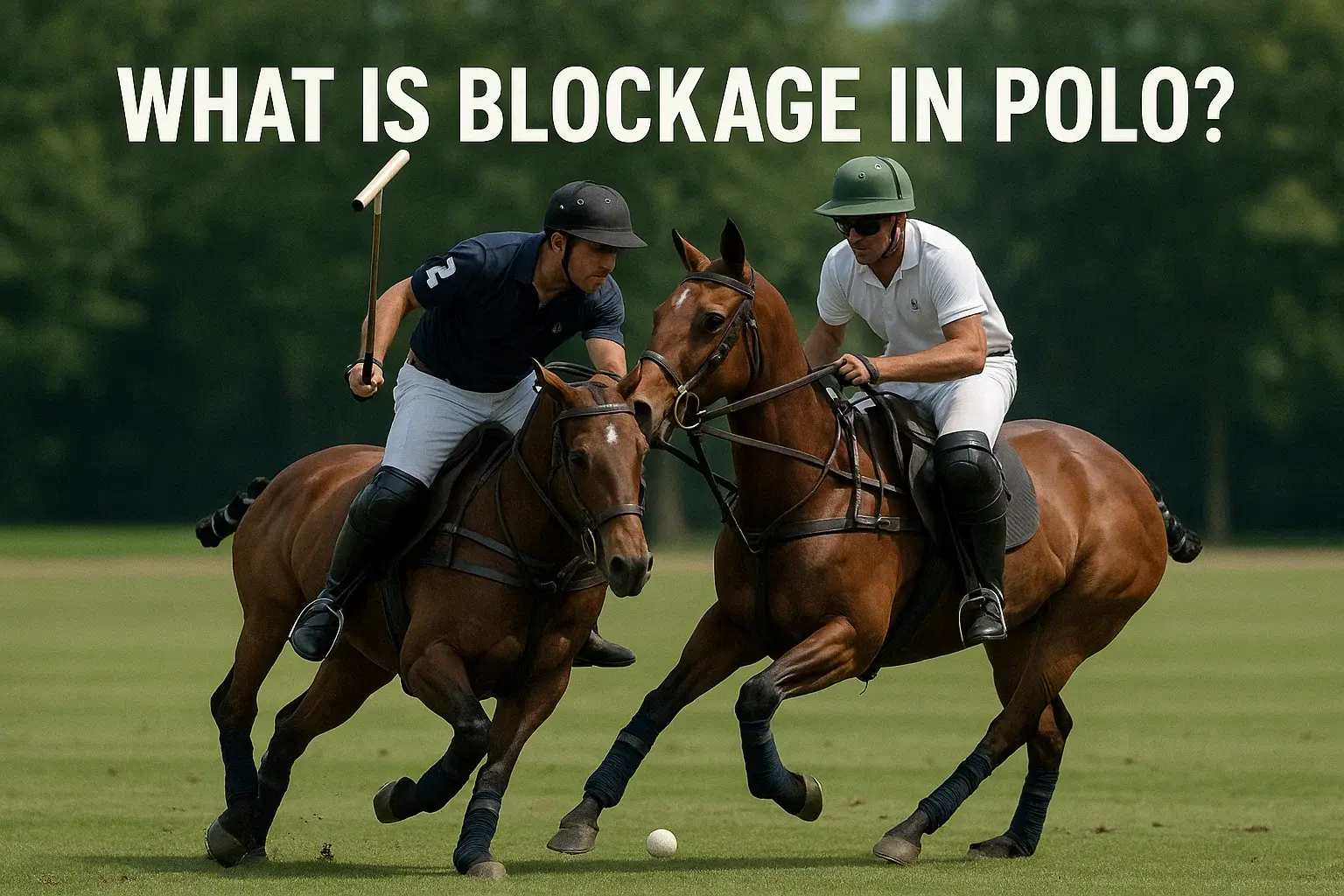In the fast-paced, tactical sport of polo, understanding the rules around blockage—also called blocking or riding off—is crucial for players, spectators, and anyone interested in the game. Blockage can refer to obstructing a player or the ball, and there are very specific rules that govern what is allowed and what is not. Misunderstanding these can lead to fouls, penalties, or even injuries.
This article breaks down everything you need to know about blockage in polo: what's legal, what's illegal, and how it plays out during a match.
1. What Is Blockage in Polo?
Blockage in polo generally refers to two main actions:
- Blocking the Player: Preventing an opponent from accessing the ball or moving freely.
- Blocking the Ball: Interfering with or stopping the movement of the ball, either through horse, mallet, or body positioning.
Both types of blockage are regulated under polo’s Line of the Ball (LOB) and Right of Way (ROW) rules, which are central to how the game is played safely and fairly.
2. Blocking the Player: Riding Off
What’s Allowed
- Riding Off: A legal move where one player rides their horse alongside an opponent and uses shoulder-to-shoulder contact to push them off the line or out of position.
- Must be shoulder-to-shoulder (not at an angle).
- Horses must be moving at similar speeds.
- It must be safe and not overly aggressive.
Example: Player A is riding along the ball’s path. Player B rides parallel and uses their horse’s body to nudge Player A off the line. If both horses are balanced and it’s shoulder-to-shoulder, that’s a legal ride-off.
What’s Not Allowed
- Dangerous or high-speed ride-offs.
- Striking an opponent’s horse or body with the mallet.
- Angled ride-offs (hitting from behind or at a sharp angle).
- Sandwiching a player between two others.
Example: If Player B rides into Player A’s horse at a sharp angle or with excessive force, it’s a foul. If two players try to squeeze one player in between them, that’s also illegal.
3. Blocking the Ball: Hooking & Mallet Use
What’s Allowed
- Hooking: A player may use their mallet to block an opponent’s swing if:
- They are on the same side as the opponent (e.g., right side vs right side).
- The hook is below shoulder height.
- The hook does not make contact with the opponent or their horse.
Example: Player A is swinging at the ball. Player B, riding beside them, reaches out and hooks their mallet with their own—cleanly stopping the shot. That’s a legal play.
What’s Not Allowed
- Hooking from the wrong side (reaching across a horse or rider).
- Hooking above the shoulder.
- Dangerous or reckless hooking.
- Using the body or horse to block a swing.
Example: Player B tries to hook Player A by reaching across from the left side to the right—this is illegal. Also, if the mallet hits the rider instead of the mallet, it’s a foul.
4. Blocking the Ball with the Horse or Body
Players often position themselves or their horse to intercept the ball. This is only legal if:
- They do not cross the Line of the Ball dangerously.
- They establish Right of Way legally.
- They do not endanger other players or horses.
Legal Example: A player moves ahead of the ball and turns cleanly onto its line before any opponent arrives. They now have the Right of Way and can block others from accessing it.
Illegal Example: A player cuts across the ball’s path at the last moment, forcing an opponent to pull up to avoid a collision. This is known as a crossing foul and is penalized.
5. The Line of the Ball (LOB) and Right of Way (ROW)
These concepts determine who has the right to play the ball and who must yield.
- Line of the Ball (LOB): The imaginary line created by the ball’s direction.
- Right of Way (ROW): Given to the player closest and most in line with the LOB at any time.
Blocking an opponent who has the ROW is illegal and dangerous.


8. Conclusion
Blockage is a fundamental part of polo strategy—but only when executed within the rules. Legal blocking through riding off or hooking adds depth and excitement to the game, while illegal blocking poses serious risks and leads to penalties. Understanding these rules not only helps players perform better but also makes watching the game much more enjoyable.
Key points to remember:
- Always respect the Line of the Ball and Right of Way.
- Ride-offs must be safe, shoulder-to-shoulder, and at similar speeds.
- Hooking is allowed only from the correct side and below the shoulder.
- Dangerous or unfair blocking is penalized to maintain safety and fairness.
Whether you're a new player or a fan in the stands, knowing the rules of blockage gives you deeper insight into polo's dynamic, high-stakes nature.


